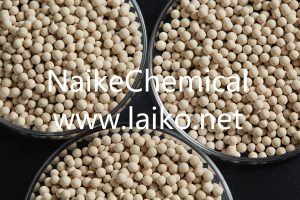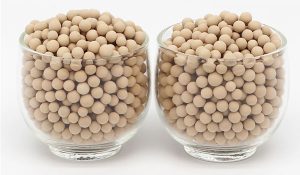What Are the Differences Between 3A, 4A, and 5A Molecular Sieves?
What is the difference between 3A, 4A, and 5A molecular sieves? Are the three types of molecular sieves the same purpose? What are the factors related to the working principle? Which industries are they used in?
Ⅰ. The chemical formula of 3A, 4A, and 5A molecular sieves
1. Chemical formula of 3A molecular sieve:
2. Chemical formula of 4A molecular sieve:
3. Chemical formula of 5A molecular sieve:
Ⅱ. The aperture of 3A, 4A, and 5A molecular sieves
The working principle of molecular sieves is mainly related to the pore size of molecular sieves, which are 0.3nm/0.4nm/0.5nm respectively. They can adsorb gas molecules whose molecular diameter is smaller than the pore size. The larger the pore size, the greater the adsorption capacity. The pore size is different, and the things separated by filtration are also different. In simple terms, 3A molecular sieve can only adsorb molecules below 0.3nm. The adsorbed molecules of the 4A molecular sieve must also be less than 0.4nm, and the same is true for 5A molecular sieve. When used as a desiccant, a molecular sieve can absorb up to 22% of its weight.
Ⅲ. Application of 3A, 4A, and 5A molecular sieves in different industries
3A molecular sieve is mainly used for drying petroleum cracking gas, olefin, refinery gas, and oil field gas. And it is a desiccant in chemical, pharmaceutical, insulating glass, and other industries. The drying effect of the 3A molecular sieve is mainly reflected in liquid (such as ethanol) drying, hollow glass air drying, nitrogen, and hydrogen gas mixture drying, refrigerant drying, etc.
4A molecular sieve is mainly used to dry natural gas and various chemical gases and liquids, refrigerants, drugs, electronic data, and volatile substances, purify argon, and separate methane, ethane, and propane. It is mainly used for the deep drying of air, natural gas, hydrocarbons, refrigerants, and other gases and liquids, preparation and purification of argon, static drying of electronic components and perishable materials, dehydrating agents in paints, polyesters, dyes, and coatings.
5A molecular sieve is mainly used for natural gas drying, desulfurization and carbon dioxide removal, separation of nitrogen and oxygen to prepare oxygen, nitrogen, and hydrogen, petroleum dewaxing, separation of normal hydrocarbons from branched-chain hydrocarbons, and cyclic hydrocarbons.
However, the large specific surface area and polar adsorption of the renewable 5A molecular sieve can achieve deep adsorption of water and residual ammonia. The decomposed nitrogen and hydrogen mixture enters the dryer to remove residual moisture and other impurities. The purification device adopts double adsorption towers, one adsorbs dry ammonia decomposition gas, and the other desorbs moisture and residual ammonia in the heating state (usually 300-350) to achieve the purpose of regeneration.



